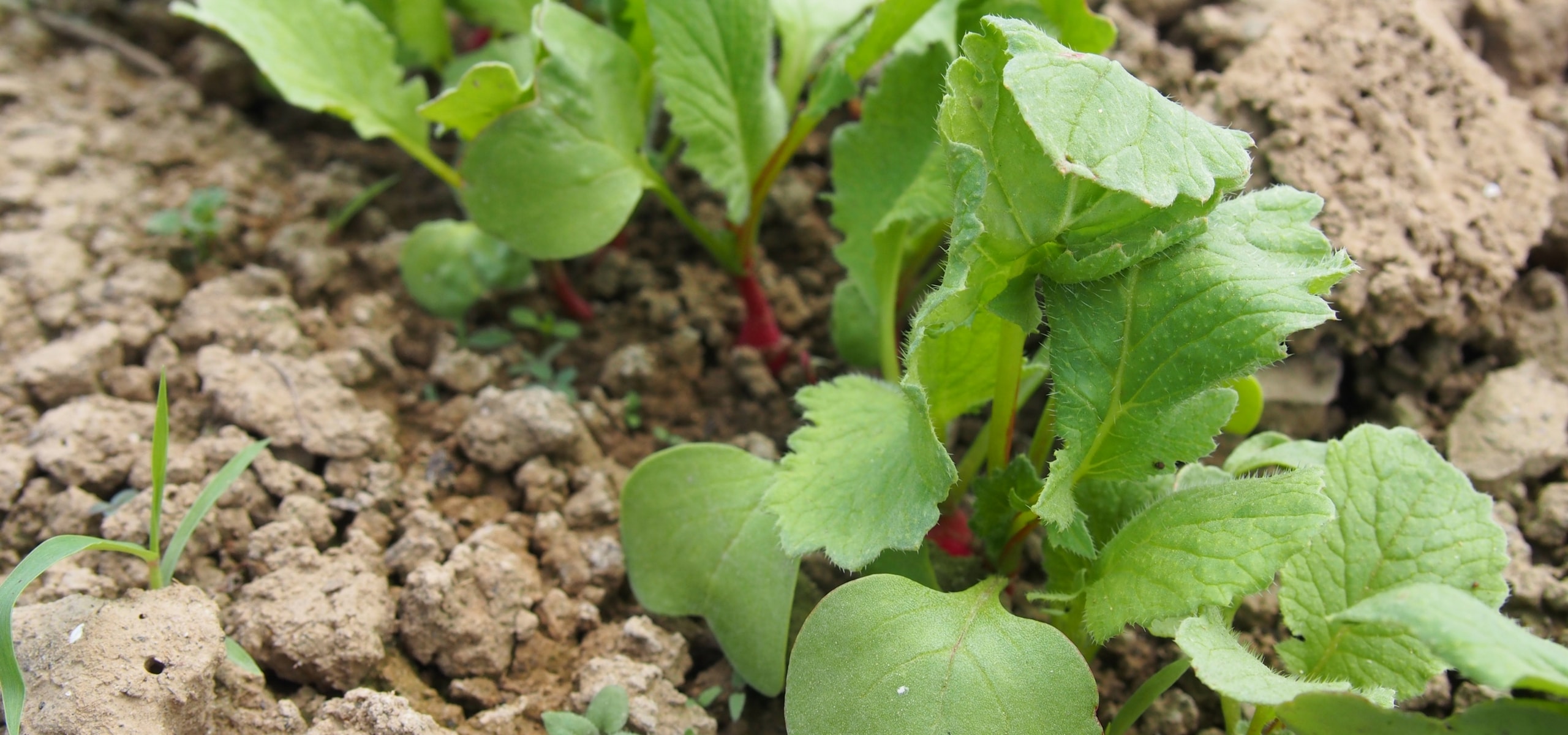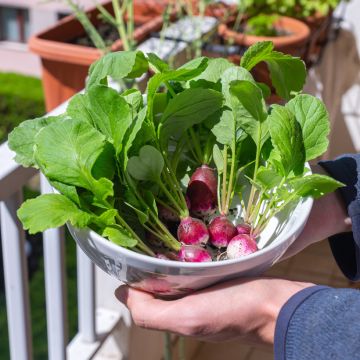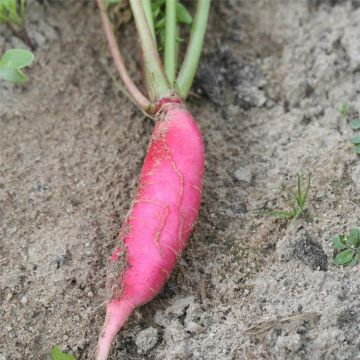
Sowing radishes
in the vegetable garden
Contents
Where to sow?
Sowing radishes (monthly radishes, forcing radishes, as well as daikon and winter radishes) is simple to carry out. It is done directly in open ground from February to November, depending on the type and variety.
Radishes are not demanding and thrive in all soils, even ordinary ones. They require sunlight to develop but are sensitive to lack of water: a moist soil is therefore ideal. In the hottest regions and during dry periods, it is better to place them in partial shade. This is a low-maintenance crop that can easily be interspersed between ranks or with other vegetables. Simultaneous sowing, in the same row, with carrots is a classic and effective combination.
When to sow?
Radish seeds germinate quickly (in 3 to 5 days) and sprout at temperatures as low as 7°C.
Each variety has an ideal sowing period. You will find the precise information on the seed packet. However, in general, radish sowing takes place:
– from February to the end of March, under frames or tunnels, for forcing radishes,
– from mid-March to mid-September for monthly radishes,
– from May to the end of August for summer radishes and turnip radishes,
– from June to November for winter radishes.
Discover other Radish seeds
View all →Available in 1 sizes
Available in 1 sizes
Available in 1 sizes
Available in 1 sizes
Available in 1 sizes
Available in 1 sizes
Available in 1 sizes
Available in 1 sizes
Available in 1 sizes
How to sow?
Sowing is done in well-prepared soil: weeded, loosened, and then raked to achieve fine soil. To sow directly in open ground, in rows:
– trace furrows spaced 15 cm apart for small radishes and 25 cm apart for large winter and turnip radishes. The sowing depth varies depending on the type of radish: round radishes are sown at a very shallow depth, with seeds barely covered, while long radish seeds should be buried at a depth of 2 to 3 centimetres.
– sow thinly in rows, possibly mixing the seeds with sand, spacing the seeds about 3 cm apart for small radishes and about 5 cm apart for turnip radishes.
– cover with fine soil, firm down with the back of the rake,
– carry out an initial watering, with light rain to avoid displacing the seeds,
– keep the soil moist until germination.
After germination, when the young plants are well developed, thin out to leave one plant every 4 – 5 cm for small radishes and one plant every 10 – 15 cm for large ones.
Broadcast sowing is possible and easy; it involves scattering a small quantity of seeds over well-prepared soil and gently covering them with a rake. However, it results in more tedious thinning and less easy weeding.
Radishes can also be sown using seed tapes: super simple! The seeds, pre-spaced, are enclosed in biodegradable paper. These tapes sometimes contain several varieties or radish seeds are combined with carrot seeds. Sowing involves burying the tape and watering.
To have radishes regularly, the sowings should be renewed every 15 days, except for winter radishes, which can be stored for a long time in a silo or in open ground.
- Subscribe!
- Contents







































